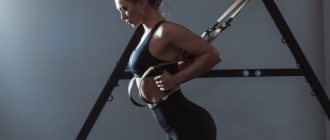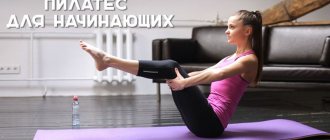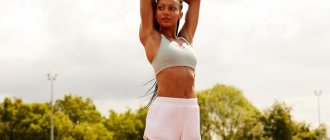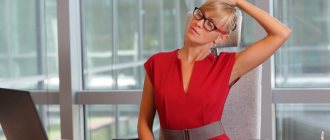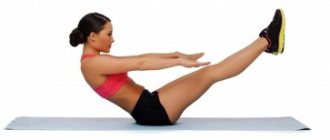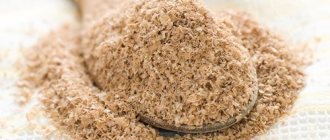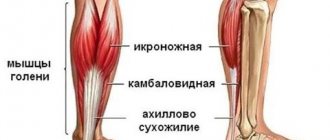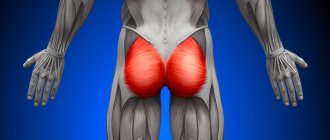You've probably heard about Pilates - famous singers and actors from all over the world practice it, and your nearest fitness center definitely has a special room and trainers for this system.
But few people will say exactly what the essence of Pilates is and how it differs from regular fitness. Is it true that it is similar to yoga? Is it difficult to do it? Who is it suitable for?
World and European synchronized swimming champion, Honored Master of Sports, current Pilates and yoga instructor (20 years of experience in the fitness industry) Natalia Gruzdeva .
Pilates appeared more than 100 years ago
The inventor of Pilates, Joseph Pilates, was born in 1883 in Mönchengladbach, Germany. Joseph grew up as a very sick and weak boy, suffering from asthma, rickets and rheumatic fever. His father Friedrich, who was involved in gymnastics and weightlifting, believed that healing could come through physical activity. And it really helped - by the age of 14, Joseph became strong and practically forgot about his old illnesses. His body became so perfect that the boy was even invited to pose for an anatomical atlas.
Pilates fell in love with sports: he did martial arts, yoga and gymnastics. Joseph stayed in Germany until he was 32 years old, working as a physical education coach at a local school. In 1912, he moved to England, where he made a living in every possible way: he performed in the boxing ring, was a circus performer, and even taught self-defense to Scotland Yard detectives.
At the same time, Joseph begins to develop his own system of exercises. He understands that physical activity alone is not enough for the full development of a person; a spiritual component is also needed, therefore he combines exercises with the philosophy of martial arts and meditation.
During the First World War, Pilates helped wounded soldiers in hospitals in England, while simultaneously trying out his own training system. He even equipped some beds with special springs that were attached to the wall. And thanks to the Pilates system, fighters recovered from injuries much faster.
In 1926, Joseph moved to the United States and opened his own studio in New York. His training system quickly became popular - so much so that ballet, dance, theater and film stars began to appear in his studio.
Gymnastics, of course, was not something new for anyone. What attracted people to the invention of Pilates was something else – the combination of physical exercise and a whole philosophical system.
Pilates is not just a workout, but also its own philosophy
Pilates himself called the developed system controlology - from the word control, since the main thing in it, according to Joseph’s idea, was precisely control over one’s body and mind. Pilates believed that “the body is created by the mind” and without proper psychological preparation there is practically no point in physical exercise.
In his opinion, one of the biggest problems of modern man is that he is completely unable to control his mind. The brain works as if on its own, thoughts come and go, and the person not only cannot follow it, but does not even try. But if you combine physical training and mental training, if during gymnastics you concentrate on the part of the body on which the exercise is performed, the result will be incredible.
Pilates was confident that the human body has enough resources to heal almost any injury and disease, we just don’t use it because we don’t know how.
At the same time, Pilates did not have a clear system of physical training. Joseph developed 34 gymnastic exercises, but did not force anyone to do only them - people were free to choose for themselves how to load their own body. The essence was precisely in the approach to training, the combination of psychology and physical work, and a certain attitude towards preparation in general.
Natalia Gruzdeva: “Pilates is, in principle, about effective movements. We do not control the mind through physical exercise, but through intelligent movement we perform the exercises with full efficiency.
How much stability is needed, how much mobility is needed - we do exactly as much as a person needs for him to function, live, be healthy, active and perform not only everyday tasks, but also engage in any other sports.”
But the term “controlology” never came into use and was quickly forgotten. And the Joseph Pilates exercise system is now known throughout the world under the name of the inventor - Pilates.
Dangers of Pilates
When a friend told me that as a result of group yoga classes she had torn a ligament in her right knee and the doctor now forbade any physical activity, I decided that I could no longer remain silent. A girl who had been going to yoga regularly and with pleasure for two months was knocked down by the frog pose. In my case, I am guilty of rolling over, which is very beneficial for my back, and the balancing on my tailbone that precedes it.
The fact is that after four years of relaxing going to the fitness club, I finally found an activity that made me come to group training two and then three times a week, including Sunday mornings. Pilates is the kind of gymnastics that its founding father, Joseph Pilates, used to help wounded soldiers get back on their feet and rehabilitate injured athletes. Two months later, the instructor praised my ability to feel the body, my results and said that I myself could be an instructor. When I came to visit, I proudly demonstrated the “rocking chair” and “diving swan” poses. And three months later, one morning I couldn’t get out of bed.
Problems with the sciatic nerve began a little earlier - pain from the lower back went through the left half-butt to the left leg. I shared the information with the instructor, she recommended to be more careful, but did not forbid me to practice. And I didn’t want to miss training, although I could no longer do basic crunches, and then I went to the pool and hammam. It was a hot summer, I had to drive in the car either with the windows open or with the air conditioning, so it could have blown out, I thought.
Then it completely hit me - for a whole week I could only crawl somewhere around the apartment like an old man, only when absolutely necessary. Sit down, stand up, roll over, sneeze, look around - literally every movement brought hellish torment. Neither ointments, painkillers, nor needle applicators relieved the pain. I was twisted onto my left side, and I sobbed, looking at myself in the mirror. Then I managed to get into the car and drive to a doctor who had been tested for years - a chiropractor and reflexologist. Complex treatment lasted throughout August of this year, and echoes of the problem are still heard, as soon as you find yourself in the cold or physically strain yourself. Needless to say, during this time I forgot the way to the fitness club.
the Global Spa salon, Olga Kolpacheva. Working with my not very symmetrical body - I, like many, have scoliosis with osteochondrosis, plus 10 years ago there were serious injuries, and the right and left half are somewhat different from each other - Olga talked about the incorrect balance of the muscle corset. In such cases, you cannot give an even load on both sides of the body. Since on one side the muscles are in spasm, and on the other they are stretched, the load will be sufficient for one half, but over- or under- for the other, and in my case it is necessary to load the left side more.
Could Pilates exercises be harmful to health? I addressed this question to Irina Ponomareva, coordinator of the Mind Body programs from World Class. “Of course, in your case, going to general classes had to be done with great reservations,” she said. — First of all, a personal approach and selective exercises are needed. The Pilates system itself, of course, cannot do any harm. You need to analyze the exercises you performed.” She also asked if I had been consulted by a sports doctor before starting classes.
I did all the exercises provided at the initial level. During the consultation, the doctor did not pay attention to my past injuries - the bones had long been overgrown and did not bother me, due to my “uneven” back, running, aerobics and other intense training were prohibited and Mind Body practices and a swimming pool were strongly recommended.
Irina redirected me to the traumatologist-orthopedist of the World Class Zhukovka club, Alexey Belozerov. The doctor listened to my exciting story, looked at my back and told me that massage therapists often talk about muscle tension. But “pumping up” one side is prescribed for people with the third degree of scoliosis, that is, practically with a hump. He said that I was predisposed to back problems and would have to fight them all my life, explained that the cause of my illness was complex and he couldn’t blame Pilates exclusively, but he banned these classes and prescribed functional training.
For example, an exercise that simulates swimming on land is ideal for posture. It can be done both in the gym and at home. To perform it, you only need a mat, so you don’t have to waste time traveling to the club and back, or changing clothes. Moreover, my membership card ran out the other day.
What is its essence?
Pilates is a comprehensive system of body development based on gymnastics, yoga, tai chi (a type of wushu) and several other eastern traditions.
The essence of Pilates is dynamic exercises without overexertion, performed at a slow pace along with breathing exercises and mind control. The movements are performed gently, without sudden changes in exercises.
Pilates has six basic principles:
• Concentration – focusing deeply on your body during exercise. While performing the exercise, you need to concentrate on the muscle you are working on.
• Centering – special attention to the center of the body, which means the muscular corset, rectus and transverse abdominal muscles. Exercises are performed with a tucked stomach and a straight back.
• Control – constant concentration on the correct execution of exercises, monitoring your thoughts, body position and posture.
• Breathing – breathing control. One of the most important principles of Pilates. You need to inhale as deeply as possible and slowly exhale completely.
• Precision – exercises should be performed exactly as needed. There is no point in doing more, trying to pump up the body faster. Relaxation will not produce the desired result either.
• Smoothness – all movements must be performed slowly and smoothly, fluidly. You can’t rush, it’s important to feel how the muscles work, make them work as hard as possible, but not overexert yourself.
The most important thing in Pilates is strict adherence to all six principles. If you forget even one, then the whole technique will collapse and will not work as it should. Otherwise, it will just be fitness with Pilates elements. Self-control and discipline are the basis of success.
Regular training is also important. Single exercises will not give an effect, you need consistency.
Use available methods
Working on the mat
Mat work can be the most challenging as it forces clients to defy gravity. It is important to first teach exercises on the mat, and then they can be performed at home. Recommendations that may be useful when working with clients who are heavy:
- Teach the mat on the Cadillac so they can get into the starting position more easily.
- You make full use of the equipment, this is mandatory. Special corners under the back will allow clients to feel comfortable lying on their back, align their body position and ease the impact of gravity. Placing corners and pads under the client's head and shoulders helps the client achieve a more aligned position and also promotes better breathing. If you don't have any corners, use a spine or arch corrector.
- Use small yoga balls and blocks to improve leg position, increase energy flow, and develop inner thigh strength.
- Watch for facial expressions of tension and listen to clients' breathing to ensure they are not holding it or hyperventilating. If a person needs a rest, move on to the basics—breathing or stretching—until they are ready to continue; make the flow normal and smooth.
Reformer
Pilates equipment helps support and align the body (Coyle, 2013). When overweight clients use a reformer, they often discover the joy of movement for the first time in their lives.
Include work with the reformer in each lesson for a sufficiently long time. Please note the following when working on the reformer with large people:
- Help clients lie down correctly on the reformer by teaching them to roll from a sitting to a lying position, as they would on a bed before going to bed. To return they need to do everything in reverse order. You can also help them by holding their hands, or give them a bar in their hands and pull on it.
- Minimize movement outside the reformer and up and down on the carriage; this will increase comfort, facilitate smooth movement and improve endurance. Start with footwork and finish with running and hip lifts.
- To work while lying on your back, adjust the equipment, lowering the position of the leg bar if necessary. If the client is small, you will need to prepare equipment for exercises such as Short box, Elephant or other non-back exercises.
- Use a box to support your pelvis in supine exercises such as Foot Work. This will make it possible to hold on with your hands if they do not fit on the reformer. Explain to clients that the pole will help them work at the pelvic level.
- Pay attention to the spring settings. For some exercises, such as Foot Work and Elephant, additional springs can actually make the exercise easier. Consider when springs provide resistance and when they provide assistance, and educate clients on this important concept.
- Place a stability ball on springs to provide support for people with heavy legs or poor balance in Arm reach and pull exercises and in the “hundred”, where the legs need to be held in weight for a while.
- Be creative. In the beginning, for example, you can teach some of the Short box movements while sitting on one side of the reformer rather than on the box.
- Add extra reps to increase endurance. In running, for example, start with walking, then stretch, then lightly jog, return to stretching, and then run again. Each “set” provides a slight increase in tempo without compromising technique.
- Learn to “look at the body” in a new way. Look at the folds in the clothing and notice the straightening in some places after correcting the body position. Pay attention to the distance to your toes and the alignment of your legs to assess what is happening at the center of force. Ask clients: “Do you feel the spine lengthening along the carriage?” if you are unsure of the position of the spine.
- Touch after permission and with clear intentions. Use constant pressure so that it is clear that touch is teaching.
- Keep your reformer fun. Let clients enjoy the artistic feeling of movement, the feeling of freedom in the joints.
What does Pilates develop?
Regular Pilates classes strengthen the entire body, develop muscle corset and help recover from injuries.
Benefits of Pilates:
• Increases body flexibility.
• Increases strength.
• Develops the muscular corset (core), which helps prevent injuries.
• Improves blood circulation.
• Improves breathing, increases lung capacity.
• Teaches you to feel your body, control your thoughts and mind.
• Helps fight stress, improves sleep.
• Restores muscles and body after injury, which is especially important for athletes.
Natalia Gruzdeva: “How much can Pilates help with recovery from injury? Much. Many issues are resolved with the help of effective movements, especially after injuries and operations, where adequate motor activity was impaired.
As a professional athlete and coach, I have encountered both ballerinas and football players who felt better after Pilates because the movements took on a completely different form.
I can also say about myself that after leaving big sport there is always a baggage of professional ailments. And as soon as Pilates appeared in my life, many issues with long-term injuries went away along with the training.”
Comparison
Both yoga and Pilates can help with weight loss. But they do it in different ways. If yoga is a spiritual practice aimed at achieving harmony between body and spirit, then Pilates is a type of gymnastics that will help restore the physical condition of the muscles and the body as a whole. Both are useful.
Harmony between body and spirit is needed so that a person can listen to his body, notice changes in it, feel when the body needs something, control his psycho-emotional state while losing weight and not get upset over little things.
And restoring physical condition is to prepare muscles for stress, “activate” deep muscles that remain “unused” due to everyday activity, improve metabolism and internal nutrition and circulation systems. All this will help in further training, when a more intense direction of fitness is chosen.
But neither yoga nor Pilates can be used as the only way to lose weight. Their effectiveness in terms of “fat burning” is too low. By engaging in these types of activities, you can lose up to 5-7 kilograms.
| Characteristic | Yoga | Pilates |
| primary goal | Achieving psycho-emotional harmony, creating a connection between body and spirit | General health, recreation of the body, improvement of muscle condition |
| The presence of strength practices aimed at burning fat and excess calories | Few, available after studying simple poses (asanas) | Yes, there are training sessions at every training session, but they are not exhausting. |
| Possibility of modeling a figure | Unambiguous. During training, you can choose those asanas that strain the muscles needed for modeling | Average. The goal of Pilates is to improve the body’s health, not to make it “beautiful.” Training involves a variety of activities without focusing on one thing |
For weight loss, it also makes sense to consider so-called “strength” or “fitness yoga.” Although this direction is far from ordinary yoga, it is aimed specifically at burning excess calories. But it is better not to practice fitness yoga without an instructor, as some asanas can lead to extremely high stress on the muscles.
Do you need exercise equipment?
Training takes place both with the use of special simulators and without them.
Pilates itself developed a number of machines called GRATZ, which are still manufactured in the USA to this day. In many ways they resemble those beds with straps and springs that Joseph made for wounded soldiers in England.
Natalia Gruzdeva: “In the Pilates system, exercise machines are not those machines that provide some kind of resistance, but, on the contrary, give feedback. Due to the fact that we perform exercises with them, we receive feedback for our nervous system so that our movement itself is more intelligent and effective.
The machines in Pilates are different from those on which we pump biceps, triceps, and so on. There are different tasks here. When there are simulators, it’s great, it’s an addition, our ally and assistant in more effective development. But if there are no machines, then there is a whole system of Pilates on mats.
Maybe it's too simple?
In fact, Pilates is much more complex and difficult than it seems. This is not just gymnastics on mats - Pilates exercises are aimed primarily at developing deep muscles, which in humans are most often either weakened or overstrained.
Therefore, working on these muscles requires a lot of effort - not even every professional athlete will be able to perform all the Pilates exercises on the first try.
Natalia Gruzdeva: “Is Pilates easier than fitness? These are different approaches. You can’t compare which is easier – swimming or running. Everywhere there is some kind of load. These are different types of training. The body must develop harmoniously. Nobody says that you need to do either fitness, or sports, or exclusively Pilates. Pilates is the program that allows you to more and better reveal the possibilities of standard fitness.
I myself have encountered the fact that when people engage in only one type of activity, their body acquires a certain standard set of habits - to do only this and use only this set of muscles.
And when they come to a different training model, it becomes difficult for them because their body is not used to using a new set of muscles and movements. The body adapts for a while, then it becomes easier.
But there are people for whom Pilates is not suitable at all, but this is not due to difficulty, but to the fact that they are not used to doing something slowly and thoughtfully; it is easier for them to get on a treadmill and run 10 thousand kilometers at full speed.”
TRENIROVKA: we test the effectiveness of Pilates for ourselves and tell you why it is so useful
Well, the New Year holidays have passed, and after a series of feasts, endless gatherings at guests and violations of the regime, it’s time to return to an active lifestyle and start playing sports again.
And what kind of training to go for in order to get both benefit and pleasure, and smoothly get into the rhythm, we will tell you in our traditional fitness section. Pilates and PMP studio
I was a little familiar with Pilates before - our editors did it right in the office, so I had some idea about this type of physical exercise. All we needed for this was a mat, 30 minutes of free time and a little desire. During the training we warmed up thoroughly, toned our muscles, lifted our spirits and, having received a boost of energy, went on to work full of enthusiasm.
In general, in my opinion, Pilates was just that. However, as it turned out, it can be completely different, and I was convinced of this at the PMP Olymp Pilates studio. Here Pilates is practiced on special machines, which represent a whole system, but more on that later.
In general, Pilates was developed at the beginning of the 20th century by Joseph Pilates, who himself experienced health problems and could not fully engage in sports. The set of exercises he presented was supposed to help people experiencing pain in the back, spine, and knees. It also contributed to the rehabilitation of the wounded after the First World War, and then over time became a form of fitness.
What we see now in the format of the fitness industry is such a similarity and a simple modification of the once powerful exercise system, which required real male physical endurance and strength. Thanks to this knowledge, we at PMP have differentiated ourselves from the rest and carry this as a real concern for the body and head, or rather their indisputable and separable connection,
— says studio founder Denis Sychev.
PMP studios (there are two of them in Moscow) are popular with many celebrities. So, Vera Brezhneva, Polina Gagarina, Ravshana Kurkova and many others practice Pilates there. Why they are so attracted to these workouts and what can be achieved with regular Pilates classes is what I tried to figure out.
Training
My workout started on the reformer machine. What it is and what it is aimed at, studio trainer Tatyana Yurkina told.
It changes the body, aligns it, prepares the powerhouse, that is, your strong center, makes sure that there are no distortions anywhere, so that the body works functionally and efficiently,
- says Tatyana.
It is truly universal - during the lesson I was convinced of this myself, having managed to work on the muscles of the abs, back and even the inner surface of the thigh. In this case, all exercises are performed on the moving part of the reformer, and additional resistance is provided by springs.
SPLETNIK.RU editor Mariana Pankina and PMP studio coach Tatyana Yurkina
Then the coach introduced me to the so-called Cadillac. This is another piece of equipment that a Pilates workout is incomplete without. Outwardly, it resembles a bed, which is equipped with special devices for various exercises. The Cadillac is a multi-functional trainer that, according to the expert, can be used to complete your entire workout. Here you can work out everything: arms, legs, back, and abs. Like the reformer, the Cadillac can be used in different positions: lying down, sitting, kneeling, and so on.
However, as the trainer explains, despite the fact that all simulators are universal and, in principle, one can replace the other, each of them is used during the lesson.
Each simulator has a little twist that the other does not have. The system uses absolutely all simulators, and even if you have come to the basic level, you cannot say that you will only train on one of them. The system is built in such a way that during a workout we have time to work out on a reformer, on a mat without equipment. And then, looking at some characteristics of the person (for example, problems with the shoulder, foot, knees) during the training, I give him special exercises on other equipment that will help either straighten something, or strengthen something, or whatever something to adjust
- says Tatyana.
I completed my workout on a barrel roll. On it I worked on stretching, abs and back.
The motto of Pilates is strength, flexibility, control. Many people, when they come to the gym, say: Pilates is something about “lying down.” We want a person to strengthen his center with small amplitudes and simple exercises, and then do something that we then look at on Instagram and say “wow”
- adds the coach.
Cost and schedule
The studio is not cheap. One personal training session lasting 55 minutes will cost 5,300 rubles, with the founder of the club Denis Sychev - 7,700 rubles. You can do Pilates together: then you will have to pay 3,600 and 6,100 rubles, respectively. The studio also has a system of packages for several workouts at once. A package for five lessons costs 25 thousand rubles, for 10 - 48 thousand. They all have an expiration date.
There is no schedule as such in the studio; you can sign up for a class yourself directly on the website.
The benefits of Pilates
Pilates has a lot of advantages. Let's talk about the main ones.
1. There are no contraindications - even pregnant women can practice.
2. Pilates helps to work stabilizer muscles, strengthens the back and forms beautiful posture.
3. It is not dangerous.
4. Pilates classes contribute to the formation of a beautiful and toned figure.
Pilates will give you more amplitude in your sports disciplines, help you recover faster, and perform exercises more correctly. For a woman’s body, Pilates will be enough so that it “does not let you down” both in front of the mirror and in ordinary professional life. The muscles will be toned and elastic, and with special equipment in Pilates you can work in isolation on any given task,
- says Denis Sychev.
5. Pilates exercises increase blood circulation, improve the functioning of the cardiovascular system and generally have a beneficial effect on the body.
SPLETNIK.RU thanks Puma for the sports equipment provided. View in full: https://www.spletnik.ru/beauty/na-lichnom-opyte/91022-trenirovka-boks.html
From myself I can say that Pilates is great, but it’s not my thing at all. It is unlikely that I will ever do it. But not because it’s a bad or ineffective workout: it just didn’t grab me, as they say.
There are people who are not about Pilates at all. I can’t say that you can be charmed by him right from the first time, and sometimes you think: this person will definitely do Pilates, but no. And there are guys - for example, a CrossFitter trained with us, he was so stubborn, he walked for a long time. As a result, he came and said: “My result has become completely different. I started doing exercises in a completely different way, using completely different muscles, and it’s cool,”
— said Tatyana Yurkina.
So, even if you have doubts, try it at least once - suddenly Pilates will open up for you from a completely different side and you will like it.
If you want to control your body, be aware of it and not get injured, then this is Pilates,
- adds the coach.
Ratings
Well, now it’s time to sum up and rate our next training session.
Load.
Four points. In fact, it was not difficult for me to study; I could say I wasn’t tired. Of course, my training was more of an introductory session and I didn’t feel the full load, but I believe that beginners will definitely have a hard time, especially if they are familiar with sports. The next day after training, I nevertheless felt my abdominal muscles, which was nice.
Atmosphere.
Five points. It’s more than pleasant to be in the studio. It’s somehow calm, cozy, intimate and more than comfortable here. After your workout, you can grab some great coffee and a bite to eat at a local bar. Drinks and dishes are focused on a healthy lifestyle: everything is lactose-free, gluten-free and as natural as possible.
Prices.
I don’t want to spoil the studio’s “certificate,” but I’ll give it three points. In my opinion, the prices here are really steep, and only wealthy people can afford to study here. Even if you buy several workouts at once, you won’t be able to save much. At the same time, according to the trainer, you need to exercise at least twice (or preferably three) a week, and this will be a significant blow to your pocket.
Public.
Unfortunately, I was not able to really evaluate the audience. When I was doing Pilates, there were only a couple of people in the studio who were doing functional training in the next room. Everyone was busy with their own business, I didn’t feel any sidelong glances. I liked that it was not crowded and calm. So I'll give it a five. By the way, Pilates, contrary to stereotypes, is popular not only among women, but also among men.
Runners, CrossFitters, and tennis players come to us because they always work one-sidedly, have a lot of tension on one side and not very functional on the other side. Pilates is very popular among men,
- says Tatyana Yurkina.
Every day, month and year we fight the stupid stereotype that Pilates is a woman's pastime. Both beginners in the world of fitness and professional athletes from any sport can sweat and even get exhausted during training with us. And I can’t help but be glad that the male audience is increasing every year. Yes, so far the vast majority are women, but we are only at the very beginning of the journey, and the results speak for themselves. Our clients include boxers and basketball players, hockey players, gymnasts, rowers and runners,
— adds Denis Sychev.
PMP studio trainer Tatyana Yurkina and SPLETNIK.RU editor Mariana Pankina
Is it necessary to work with a trainer or can you do it on your own?
Initially, you need to practice only under the guidance of a trainer, since it is very difficult to independently follow all the principles of Pilates at first. Inevitably there will be mistakes and classes will not lead to the expected result.
The trainer will monitor the correctness of the exercises and create a suitable training program.
Natalia Gruzdeva: “A coach is not someone who does for a person or simply watches him lie on the mat. The trainer sees how a person performs movements and tells him a set of points with which he will achieve the most effective result.
In addition, the trainer conducts diagnostics for any beginner - looks at his effective movements in various variations, mobility in the joints. And based on this, he already understands what exercises this client should have.
And in Pilates there are only 150 basic exercises, plus each exercise has variations. A person can’t do everything in one workout, can he? So, deciding what the training of a particular person should consist of is precisely the task of the coach. It solves the problem of efficiency and achieving the goals that the client needs.”
Who can do Pilates? Are there any restrictions?
Pilates is one of the gentlest and safest types of training. Due to the slow execution of movements and the lack of work with additional weight, it is almost impossible to get injured.
Pilates is equally suitable for both women and men, there is absolutely no difference.
Natalia Gruzdeva: “Absolutely everyone can do Pilates. I wouldn't say there are any restrictions here. But people can have their own individual programs. This is a correction for a specific person.
For example, this is a pregnant woman. She will have limitations in a number of exercises, she will not be able to lie on her stomach, she will not be able to lift her legs over her head, but she will have a huge range of exercises that are designed for pregnant women.
This also includes people who are overweight, have limited joint mobility, or have spinal diseases. The program is always tailored to the individual. Every teacher takes an exam on contraindications before starting his career.”
If I want a healthy and beautiful body, is Pilates enough?
Depends on the individual. Pilates evenly develops the body and helps protect it from injury, but does not burn fat (it is not suitable for weight loss) and does not replace cardio training.
But the advantage of Pilates is that it is completely compatible with any other type of fitness. Moreover, it increases the effect of other workouts, as it increases the awareness of movements and engages deep muscles that practically do not work during regular fitness.
Natalia Gruzdeva: “I can say about myself that for me, as a professional athlete in the past, Pilates is enough to maintain my body, health, develop and stay in shape.
This is all individual, of course. People with certain medical conditions may also benefit from other types of exercise. But if a person is healthy and wants to stay that way, then Pilates is enough.”
Pump, don't pump
The hormone estrogen protects girls from bulging biceps. He is responsible for the smooth lines of the female body and will not allow you to oversize. To really build a mountain of muscle, you need to try: regularly train with heavy weights (much more than 15 kg), eat protein, amino acids and protein shakes. An ordinary woman who follows her diet and exercise regime can increase muscle mass to a maximum of 500 g per month. So there is nothing unnatural in strength exercises with medium weights for a girl’s body, if they are performed technically and in moderation.
Ideally, experts recommend combining Pilates, cardio and strength training in order to use all the muscles, learn to feel your body, live in harmony with it, and be graceful and flexible.

